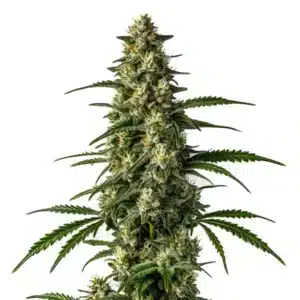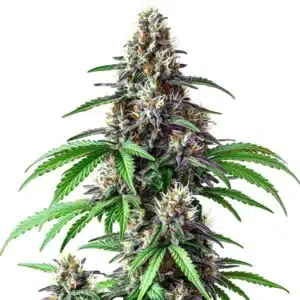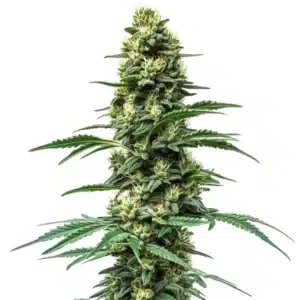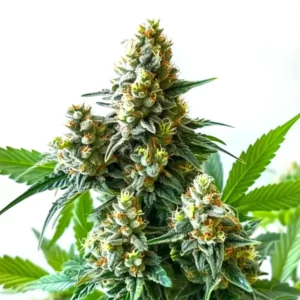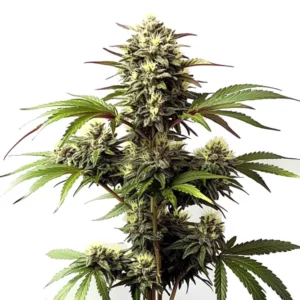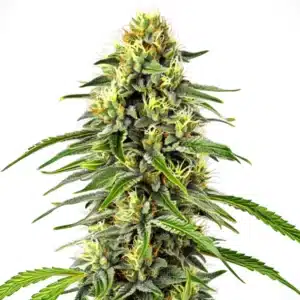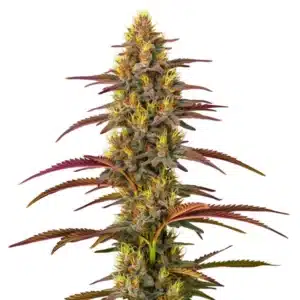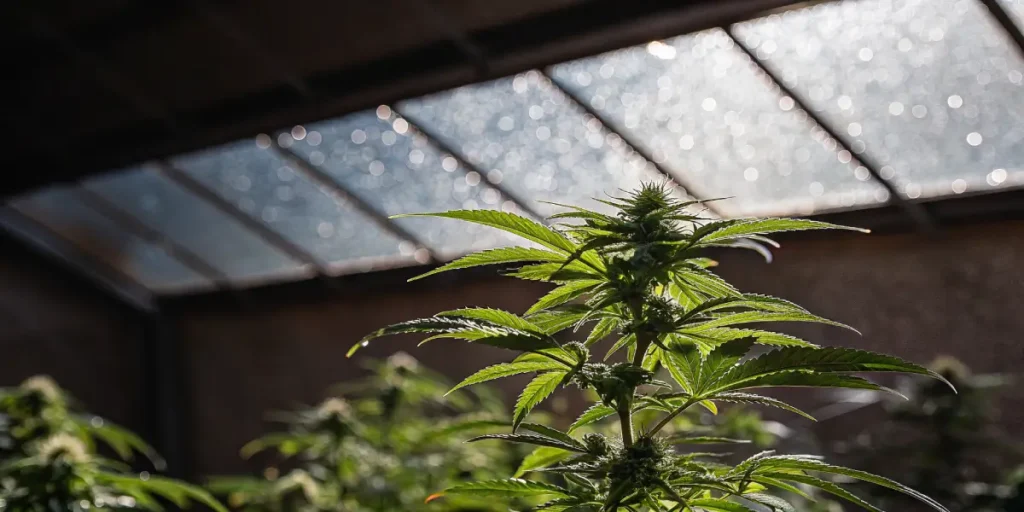
Why Transpiration Matters When Selecting Cannabis Genetics
When growing cannabis, choosing the right genetics is key. But what often gets overlooked is how transpiration plays a crucial role in this selection. Why transpiration matters when selecting cannabis genetics is simple this process, where plants release water vapor through small openings in their leaves, directly affects cooling, nutrient uptake, and overall plant health. Knowing this relationship helps growers choose genetics that thrive under their specific environmental conditions.
The importance of transpiration in cannabis genetics selection cannot be overstated. As plants transpire, they pull nutrients from the soil. This means that different strains, with varying transpiration rates, will absorb nutrients differently. Knowing the transpiration rate can help you decide which strains will thrive best in your growing environment.
Recommended Strains
Mamba Negra FBV
|
|
THC | 15% - 19% (Medium) |
|
|
Type | Fast Flowering |
|
|
Yield | High |
|
|
Phenotype | 80% Indica / 20% Sativa |
Mamba Negra
|
|
THC | 18% (Medium) |
|
|
Type | Feminized |
|
|
Yield | High |
|
|
Phenotype | 55% Indica / 45% Sativa |
Take for instance, strains like Mamba Negra FBV. This strain has a specific transpiration rate that might suit certain climates better than others. When selecting cannabis genetics, knowing these nuances can lead to healthier plants and a more bountiful harvest.
Transpiration and Its Impact on Plant Development
The function of transpiration in cannabis plant development is multifaceted. It not only cools the plant but also helps in transporting nutrients. This is crucial for growth and flower production. Without proper transpiration, plants can suffer from nutrient deficiencies, leading to stunted growth.
Furthermore, the impact of transpiration on cannabis cultivation success is significant because it directly correlates with the plant’s overall vitality and ability to produce potent flowers. Effective transpiration means that the plant can maintain its internal environment, balancing the intake and usage of nutrients efficiently.
Additionally, knowing how transpiration affects cannabis genetic traits helps growers predict which strains will perform best in a given environment. This knowledge allows for strategic planning and resource allocation, ensuring optimal conditions are met for each stage of the plant’s life cycle.
Choosing the Right Strains Based on Transpiration
Choosing cannabis strains based on transpiration rates can be a game-changer. Different strains have different transpiration needs. Some might require more water, while others thrive in drier conditions. This is why it’s essential to understand the genetic background of your chosen strain.
Knowing the importance of transpiration in cannabis genetics selection allows growers to tailor their growing environments to meet the specific needs of each strain. By doing so, they can ensure that the plants are neither over-stressed nor under-nourished, ultimately leading to a more robust harvest.
Knowing how transpiration affects cannabis genetic traits means that a grower can not only select the best strains for their environment but also optimize their cultivation practices to enhance plant health and yield. This knowledge is invaluable in developing a successful and sustainable cultivation strategy.
Practical Tips for Monitoring Transpiration
Monitoring transpiration can start with simple observations. Check the humidity levels in your grow space. High humidity can slow down transpiration, while low humidity speeds it up. Both extremes can affect plant health negatively.
Besides to using hygrometers, growers can employ other environmental control methods such as adjusting light exposure and airflow to ensure that the plants are transpiring at an optimal rate. This proactive approach can prevent potential issues before they arise.
Moreover, regularly recording data on humidity and plant responses can provide valuable insights into the role of transpiration in cannabis plant development. These records can guide future decisions, helping growers to refine their techniques and improve plant outcomes.
- Monitor humidity regularly to ensure optimal transpiration.
- Choose strains with transpiration rates that match your environment.
- Adjust watering schedules based on the plant’s transpiration needs.
- Utilize tools like hygrometers for accurate environmental readings.
- Observe plants closely for signs of nutrient deficiencies or excesses.
Promos & Deals
Transpiration and Nutrient Uptake
Transpiration significantly affects nutrient uptake. As water evaporates from the leaves, it creates a sort of suction that draws water and nutrients up from the roots. If transpiration is too slow, nutrient uptake can be hindered, potentially leading to deficiencies.
Conversely, if transpiration is too rapid, the plant might uptake nutrients too quickly, which can lead to nutrient burn. This delicate balance is why transpiration matters when selecting cannabis genetics. It’s about finding that sweet spot where the plant can thrive.
Knowing the impact of transpiration on cannabis cultivation success means recognizing the critical balance between the plant’s water loss and nutrient intake. This balance is pivotal in preventing both deficiencies and toxicities, ensuring a healthy growth cycle — especially when growing vigorous strains like GMO Fast Version from Blimburn Seeds, which thrive when moisture and nutrient levels are precisely managed.
Furthermore, by considering the function of transpiration in cannabis plant development, growers can make informed choices about the soil and fertilizer they use, aligning these elements with the plant’s natural transpiration and nutrient uptake processes.
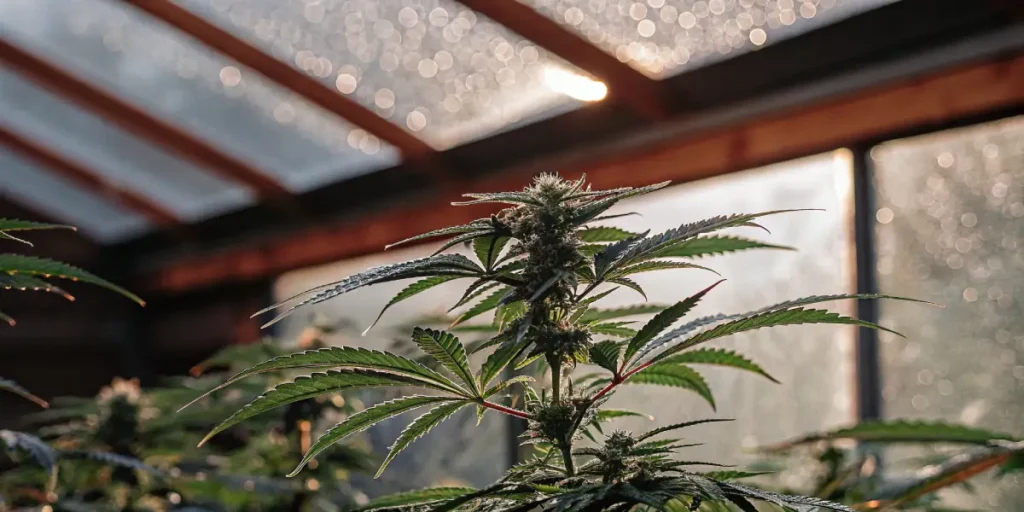
FAQs
Why is transpiration important in cannabis cultivation?
Transpiration is crucial because it helps plants cool down, uptake nutrients, and photosynthesize efficiently. Without proper transpiration, cannabis plants can suffer from nutrient deficiencies and heat stress, which can stunt growth and reduce yield.
Moreover, knowing how transpiration affects cannabis genetic traits can help growers choose strains that will thrive in their specific environment. This can lead to healthier plants and more successful harvests.
Recognizing the importance of transpiration in cannabis genetics selection allows growers to anticipate the needs of different strains, optimizing their growth conditions and maximizing plant health and productivity.
Overall, why transpiration matters when selecting cannabis genetics lies in its ability to influence many aspects of plant health, making it a critical factor in achieving successful cannabis cultivation.
How can I monitor transpiration in my cannabis plants?
Monitoring transpiration involves keeping an eye on humidity levels, plant health, and nutrient uptake. Tools like hygrometers can provide accurate readings of humidity, which is closely linked to transpiration rates. For growers cultivating vigorous hybrids such as Watermelon F1, maintaining stable transpiration is especially important, as this strain’s strong growth and dense foliage require consistent moisture balance to maximize performance.
Regularly observing your plants for signs of nutrient deficiencies or excesses can also provide clues about their transpiration. Adjusting environmental conditions and watering schedules can help maintain optimal transpiration rates.
Utilizing technology such as smart sensors can offer real-time data on environmental conditions, allowing for more precise management of transpiration factors.
Additionally, implementing a routine of consistent monitoring and data collection can greatly enhance the grower’s ability to respond to the dynamic needs of their cannabis plants.
What are the consequences of improper transpiration?
Improper transpiration can lead to several issues, including nutrient deficiencies, heat stress, and reduced growth. If a plant is not transpiring effectively, it might not be able to uptake enough nutrients, leading to poor health.
On the other hand, if transpiration is too rapid, the plant might absorb too many nutrients too quickly, which can result in nutrient burn. Both scenarios can significantly impact the overall health and yield of the cannabis plant.
Knowing the consequences of improper transpiration underscores the importance of careful strain selection and environmental management. This knowledge helps prevent potential pitfalls in the cultivation process.
In essence, the impact of transpiration on cannabis cultivation success is profound, highlighting the need for an informed approach to managing plant transpiration rates effectively.
Can transpiration rates vary between different cannabis strains?
Yes, transpiration rates can vary significantly between different cannabis strains. Some strains are adapted to dry climates and have slower transpiration rates, while others thrive in more humid environments with higher rates. A great example is Lemon Kush F1, a vigorous hybrid known for its strong resilience and balanced water-uptake behavior, making it an excellent option for growers seeking stable performance across different humidity levels.
This variability is why choosing cannabis strains based on transpiration rates is crucial for cultivation success. Knowing these differences can help you provide the best growing conditions for your chosen strains.
By appreciating how transpiration affects cannabis genetic traits, growers can make more informed decisions, selecting strains that are more likely to succeed in their specific growing conditions.
This strategic approach ensures that the chosen strains can achieve their full potential in terms of growth, yield, and potency, contributing to a successful cultivation experience.
What tools can help in managing transpiration rates?
Several tools can assist in managing transpiration rates, including hygrometers, dehumidifiers, and ventilation systems. These tools help control the environment, ensuring that humidity levels are optimal for transpiration.
By using these tools, growers can create an environment where their cannabis plants can thrive, ensuring that they transpire effectively and maintain healthy nutrient uptake. This leads to healthier plants and more successful harvests.
Other technological advancements, such as automated environmental control systems, can further enhance the ability to manage transpiration rates accurately and efficiently.
Ultimately, these tools and technologies play a critical role in maintaining the balance needed for optimal plant health, emphasizing why transpiration matters when selecting cannabis genetics.


